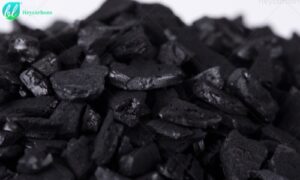Avtivated Carbon Exporting to Netherlands and Germany Customer Case
Destination country and Port: Rotterdam port, Netherlands, Germany
Time:From 2022 to 2024
Quantity: Placed 4 orders, total: 330T
Application: Coal Powdered activated carbon for steel mill flue gas treatment.
Customer requirements: 200mesh, iodine value : 600mg/g, 700mg/g, ash: 20%max
(Heycarbons: highest iodine value is 1100mg/g, lowest ash is 8%)
New Order For Avtivated Carbon Shipped to Netherlands and Germany 2025
The customer was very satisfied with Heycarbons’ products and placed a new order for 88 tons in 2025.
The picture below shows the bills of lading and photos of shipement for Heycarbons activated carbon shipped to the Netherlands and Germany.
Heycarbons Coal Activated Carbon Powder: Role in Steel Plant Flue Gas Treatment?
- 1)Desulfurization: Activated carbon has excellent adsorpti
on performance and can effectively remove acidic gases such as sulfur dioxide from flue gas.
Dust removal: Activated carbon can adsorb particulate matter in flue gas, playing a role in dust removal. - 2)Heavy metal removal: Activated carbon has strong adsorption capacity for heavy metal ions such as mercury and lead, and can remove heavy metal pollutants from flue gas.
Organic removal: Activated carbon has good adsorption properties for various organic compounds and can remove organic pollutants from flue gas. - 3)Filtration aid: After adding activated carbon, it can act as a filtration aid in the flue gas purification process, improving filtration efficiency.
* In summary, activated carbon powder from coal has good desulfurization, dust removal, heavy metal removal, and organic removal effects in steel plant flue gas treatment, making it a highly effective flue gas purifier.
What should be noted when choose coal base powdered activated carbon for gas treatment in steel plant flue?
- 1)Low moisture content to avoid clogging the spray nozzle when injecting activated carbon.
- 2)Select raw materials with low ash and sulfur content to avoid secondary pollution. Most importantly, our raw materials undergo desulfurization treatment to avoid exceeding the customer’s outlet gas testing standards, not just meeting the customer’s iodine value requirements.
What methods are used to desulfurize coal activated carbon powder to reduce its sulfur content?
- 1)Physical desulfurization methods
*Heavy media separation:
Principle: Utilize the density difference between sulfide minerals and coal to separate sulfide minerals through gravity separation.
Equipment: Gravity separation equipment such as jigs and shaking tables.
Process: Mix coal powder with water and separate using heavy media equipment to remove higher density sulfide minerals.
*Froth flotation:
Principle: Utilize the difference in surface properties between sulfide minerals and coal. Through reagent treatment, sulfide minerals are made to float on the water surface, allowing separation.
Equipment: Flotation machine.
Process: Add coal powder to the flotation machine, add flotation reagents, and through agitation and bubble action, make the sulfide minerals float, achieving desulfurization.
- 2)Chemical desulfurization methods
*Oxidation:
Principle: Use oxidizing agents to oxidize sulfides into soluble sulfates or sulfites, thereby removing sulfur.
*Common oxidants: Oxygen, ozone, hydrogen peroxide (H2O2), etc.
Process: Mix coal powder with oxidant, react at a certain temperature and pressure, then remove the generated sulfates or sulfites by water washing.
Acid washing:
*Principle: Use acid to dissolve sulfides or sulfates in coal, thereby removing sulfur.
*Common acids: Hydrochloric acid, nitric acid, sulfuric acid, etc.
Process: Soak coal powder in acid solution, react for a certain time, then filter and wash with water to remove the dissolved sulfides or sulfates.










 on performance and can effectively remove acidic gases such as sulfur dioxide from flue gas.
on performance and can effectively remove acidic gases such as sulfur dioxide from flue gas.

